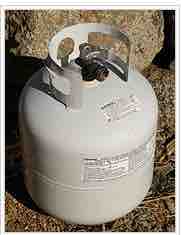Equilibrium Constants for Gases
Up to this point, we have been discussing equilibrium constants in terms of concentration. For gas-specific reactions, however, we can also express the equilibrium constant in terms of the partial pressures of the gases involved. Take the general gas-phase reaction:
Our equilibrium constant in terms of partial pressures, designated KP, is given as:
Note that this expression is extremely similar to KC, the equilibrium expression written in terms of concentrations. In order to prevent confusion, do not use brackets ([ ]), when writing KP expressions.
KP and the Ideal Gas Law
The reason we are allowed to write a K expression in terms of partial pressures for gases can be found by looking at the ideal gas law. Recall that the ideal gas law is given by:
Re-writing this expression in terms of P, we have:
Note that in order for K to be constant, temperature must be constant as well. Therefore, the term RT is a constant in the above expression. As for n/V (moles per unit volume) this is simply a measure of concentration. Pressure is directly proportional to concentration, so we are justified in our use of KP.
Lastly, there is a very important equation that relates KP and KC. It is given as follows:
In this expression,

Liquefied gas
Inside this tank, propane is compressed into a liquid, which is in equilibrium with its gaseous headspace. The internal pressure of the gaseous propane is a function of temperature.